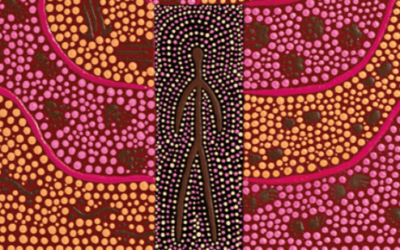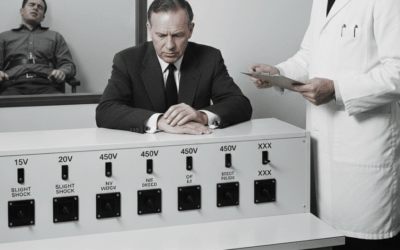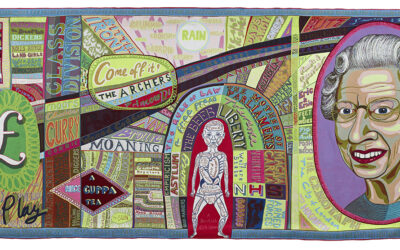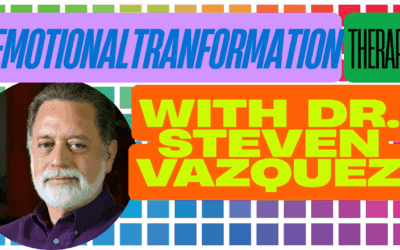What is Accelerated Experiential Dynamic Psychotherapy (AEDP)?

Accelerated Experiential Dynamic Psychotherapy (AEDP) is a form of psychotherapy that integrates elements of attachment theory, affective neuroscience, and experiential therapies. Developed by Dr. Diana Fosha in the early 2000s, AEDP aims to foster transformation and healing by emphasizing the role of positive emotions, secure attachment, and the therapeutic relationship.
Core Assumptions and Tenets of AEDP
AEDP is grounded in the belief that humans have an innate capacity for healing and growth, which can be activated through the experience of positive emotions and secure attachment. Key principles of AEDP include:
- Emotional experience is at the core of the change process
- Positive emotions and secure attachment are essential for transformation
- The therapeutic relationship serves as a secure base for exploration and change
- Healing occurs through the co-creation of new, adaptive experiences in the here-and-now
- Therapy should be affirming, empowering, and emotionally engaged
The Founder of AEDP: Diana Fosha
Diana Fosha, PhD, is a clinical psychologist and the developer of AEDP. She is the founder and director of the AEDP Institute in New York City, which provides training and certification in AEDP to mental health professionals around the world.
Fosha’s interest in the role of emotions and attachment in psychotherapy began during her doctoral studies at the City University of New York in the 1980s. She was influenced by the work of affective neuroscience researchers like Jaak Panksepp and Stephen Porges, as well as attachment theorists like John Bowlby and Mary Ainsworth.
In the 1990s, Fosha began developing AEDP as a way to integrate these various influences into a coherent therapeutic model. She drew on her own clinical experience, as well as the work of experiential therapists like Carl Rogers and Eugene Gendlin, to create a therapy that emphasized the transformative power of emotional experience and the therapeutic relationship.
Fosha published her first book on AEDP, “The Transforming Power of Affect,” in 2000. Since then, she has continued to refine and disseminate the model through her writing, teaching, and clinical work.
Influences and Collaborators
AEDP draws on a range of theoretical and empirical influences, including:
- Attachment theory (John Bowlby, Mary Ainsworth, Mary Main)
- Affective neuroscience (Jaak Panksepp, Stephen Porges, Antonio Damasio)
- Experiential therapies (Carl Rogers, Eugene Gendlin, Leslie Greenberg)
- Interpersonal neurobiology (Daniel Siegel)
- Positive psychology (Barbara Fredrickson, Martin Seligman)
Fosha has collaborated with several colleagues in developing and teaching AEDP, including:
- Ronald J. Frederick, PhD, a clinical psychologist and senior faculty member of the AEDP Institute
- Kari Gleiser, PhD, a clinical psychologist and co-founder of the Center for Integrative Health in Hanover, New Hampshire
- Natasha Prenn, LCSW, a social worker and senior faculty member of the AEDP Institute
- Benjamin Lipton, LCSW, a social worker and senior faculty member of the AEDP Institute
Cultural and Economic Context
AEDP emerged in the early 21st century, a time of growing interest in the integration of neuroscience, attachment theory, and experiential therapies. The “decade of the brain” in the 1990s had led to a surge of research on the neural bases of emotion, relationships, and mental health, which informed the development of AEDP and other integrative approaches.
Culturally, AEDP’s emphasis on positive emotions and transformation resonated with the growing popularity of positive psychology and the self-help movement. Its focus on the therapeutic relationship as a vehicle for change also aligned with the increasing recognition of the importance of common factors in psychotherapy.
Economically, the growth of AEDP was supported by the increasing demand for short-term, evidence-based therapies in the managed care era. AEDP’s emphasis on rapid transformation and its integration of multiple modalities made it an attractive option for clients and clinicians alike.
Theoretical Overlaps and Similarities
AEDP shares theoretical and practical similarities with several other experiential and emotion-focused therapies, including:
- Emotionally Focused Therapy (EFT)
- Coherence Therapy
- Intensive Short-Term Dynamic Psychotherapy (ISTDP)
- Sensorimotor Psychotherapy
- Somatic Experiencing (SE)
- Hakomi Method
Like AEDP, these approaches emphasize the centrality of emotional experience, the importance of the therapeutic relationship, and the role of bodily sensations in the change process.
How AEDP Conceptualizes Trauma, the Unconscious, and the Self
In AEDP, trauma is viewed as any experience that overwhelms the individual’s capacity to process and integrate emotional experiences. This can include acute traumas like accidents or assaults, as well as chronic traumas like neglect or abuse.
AEDP posits that when trauma occurs, the individual’s natural defenses against emotional pain (e.g., dissociation, numbing, avoidance) can become rigid and maladaptive. These defenses prevent the individual from processing and integrating the traumatic experience, leading to symptoms like anxiety, depression, and relational difficulties.
The goal of AEDP is to help clients reprocess traumatic experiences in a safe and supportive environment, using the therapeutic relationship as a secure base. By accessing and expressing previously avoided emotions, clients can begin to integrate these experiences into a more coherent and adaptive sense of self.
AEDP views the self as an emergent property of the individual’s experiences, relationships, and cultural context. It sees the self as inherently dynamic and capable of change, given the right conditions for growth and transformation.
AEDP Interventions and Techniques
AEDP employs a range of interventions and techniques to foster emotional processing and transformation, including:
Experiential Techniques
- Focusing on present-moment experience
- Encouraging the expression of authentic emotions
- Processing emotional experiences to completion
- Exploring bodily sensations and felt sense
- Using imagery and metaphor to access unconscious material
Relational Techniques
- Fostering a secure and supportive therapeutic relationship
- Empathic attunement and mirroring
- Affirming and validating the client’s experience
- Repairing relational ruptures and misattunements
- Co-creating new relational experiences
Integrative Techniques
- Linking past experiences to present-moment feelings and sensations
- Identifying and challenging maladaptive defenses and beliefs
- Fostering the development of self-compassion and self-acceptance
- Integrating new emotional experiences into a more coherent narrative of self
- Promoting the generalization of therapeutic gains to daily life
Goals and Stages of Treatment in AEDP
The ultimate goal of AEDP is to foster the emergence of the “true self” – an authentic, adaptive, and resilient sense of self that is grounded in the individual’s core values, emotions, and relationships. This is achieved through a process of emotional transformation that typically unfolds in four stages:
- Establishing Safety and Connection: Building a secure and supportive therapeutic relationship that can serve as a foundation for exploration and change.
- Accessing and Processing Emotional Experience: Helping the client to access, express, and process previously avoided or defended-against emotions, using experiential techniques and the therapeutic relationship.
- Transforming Maladaptive Patterns: Identifying and challenging the client’s maladaptive defenses, beliefs, and relational patterns, and co-creating new, more adaptive experiences and narratives.
- Integration and Consolidation: Helping the client to integrate new emotional experiences and insights into a more coherent and adaptive sense of self, and to generalize therapeutic gains to daily life.
Is AEDP Evidence-Based?
AEDP is grounded in well-established theories and research on attachment, emotion, and neuroscience. While there have been relatively few randomized controlled trials (RCTs) of AEDP specifically, there is a growing body of evidence supporting the efficacy of experiential and emotion-focused therapies more broadly.
For example, a meta-analysis by Elliot et al. (2013) found that emotion-focused therapies were associated with large pre-post effect sizes and were comparable in efficacy to other evidence-based treatments like cognitive-behavioral therapy (CBT).
Several small-scale studies have also provided preliminary support for the efficacy of AEDP. For example, a study by Frederick (2009) found that AEDP was associated with significant reductions in symptoms of depression, anxiety, and interpersonal problems in a sample of 28 clients.
While more research is needed to establish the specific efficacy and mechanisms of change in AEDP, its grounding in established theories and research, as well as its preliminary empirical support, suggest that it is a promising approach for a range of clinical populations.
Contexts in Which AEDP is Practiced
AEDP is practiced in a variety of settings, including:
- Private practice
- Outpatient mental health clinics
- Inpatient and residential treatment centers
- University counseling centers
- Community mental health agencies
AEDP can be used as a standalone therapy or integrated with other approaches, depending on the needs and preferences of the client and therapist.
What Makes AEDP Unique?
While AEDP shares similarities with other experiential and emotion-focused therapies, it has several unique features that set it apart:
- Emphasis on positive emotions: AEDP places a strong emphasis on the role of positive emotions (e.g., joy, curiosity, pride) in the change process. It views positive emotions as essential for building resilience, fostering secure attachment, and promoting post-traumatic growth.
- Focus on the transformational process: AEDP is highly attuned to the moment-to-moment process of transformation in therapy. It tracks the client’s emotional experience closely and aims to facilitate the emergence of transformational experiences or “healing moments” in the here-and-now.
- Integration of attachment theory: AEDP draws heavily on attachment theory to understand the client’s relational patterns and guide the therapeutic process. It views the therapeutic relationship as a key vehicle for repairing attachment wounds and fostering secure attachment.
- Emphasis on affirmation and empowerment: AEDP is a highly affirming and empowering approach that views the client as inherently resilient and capable of change. It aims to activate the client’s innate healing capacities and foster a sense of agency and self-efficacy.
- Use of meta-processing: AEDP makes extensive use of “meta-processing” – the process of reflecting on and making meaning of the therapeutic experience. By helping clients to process their experience of therapy itself, AEDP aims to deepen the impact of therapeutic interventions and foster generalization of gains.
Potential Applications and Future Directions
AEDP has the potential to contribute to the field of psychotherapy in several ways:
- Treating attachment trauma: AEDP’s integration of attachment theory and experiential techniques make it a promising approach for treating attachment trauma and relational wounds. Its focus on repairing the therapeutic relationship and fostering secure attachment may be particularly valuable for clients with histories of early interpersonal trauma.
- Promoting post-traumatic growth: AEDP’s emphasis on positive emotions and transformation may make it a useful approach for promoting post-traumatic growth and resilience. By helping clients to access and process the full range of their emotional experience, AEDP may facilitate the development of new meanings and perspectives in the aftermath of trauma.
- Enhancing the therapeutic relationship: AEDP’s focus on the therapeutic relationship as a vehicle for change may have implications for training and supervision in psychotherapy. By emphasizing the importance of empathic attunement, authentic engagement, and repair of relational ruptures, AEDP may help to enhance the quality of the therapeutic relationship across modalities.
- Integrating neuroscience and psychotherapy: AEDP’s grounding in affective neuroscience and interpersonal neurobiology may contribute to the ongoing integration of neuroscientific findings into psychotherapy theory and practice. As our understanding of the neural bases of emotion, attachment, and change continues to evolve, approaches like AEDP may help to bridge the gap between brain and mind in psychotherapy.
Bibliography and Further Reading
Here are some key books and articles related to AEDP:
- Fosha, D. (2000). The Transforming Power of Affect: A Model for Accelerated Change. Basic Books.
- Fosha, D. (2004). Brief Integrative Therapy Comes of Age: A Commentary. Journal of Psychotherapy Integration, 14(1), 66-92.
- Fosha, D. (2009). Emotion and Recognition at Work: Energy, Vitality, Pleasure, Truth, Desire & The Emergent Phenomenology of Transformational Experience. In D. Fosha, D. J. Siegel & M. F. Solomon (Eds.), The Healing Power of Emotion: Affective Neuroscience, Development & Clinical Practice (pp. 172-203). Norton.
- Frederick, R. J. (2009). Living Like You Mean It: Use the Wisdom and Power of Your Emotions to Get the Life You Really Want. Jossey-Bass.
- Gleiser, K., Ford, J. D., & Fosha, D. (2008). Exposure and Experiential Therapies for Complex PTSD. Psychotherapy: Theory, Research, Practice, Training, 45(3), 340-360.
- Lipton, B., & Fosha, D. (2011). Attachment as a Transformative Process in AEDP: Operationalizing the Intersection of Attachment Theory and Affective Neuroscience. Journal of Psychotherapy Integration, 21(3), 253-279.
- Prenn, N. (2011). Mind the Gap: AEDP Interventions Translating Attachment Theory Into Clinical Practice. Journal of Psychotherapy Integration, 21(3), 308-329.
If you are interested in learning more about AEDP, you may wish to explore the following resources:
- The AEDP Institute – https://aedpinstitute.org/
- The National Institute for the Psychotherapies (NIP) – https://nipinst.org/
- The International Centre for Excellence in Emotionally Focused Therapy (ICEEFT) – https://iceeft.com/


























0 Comments